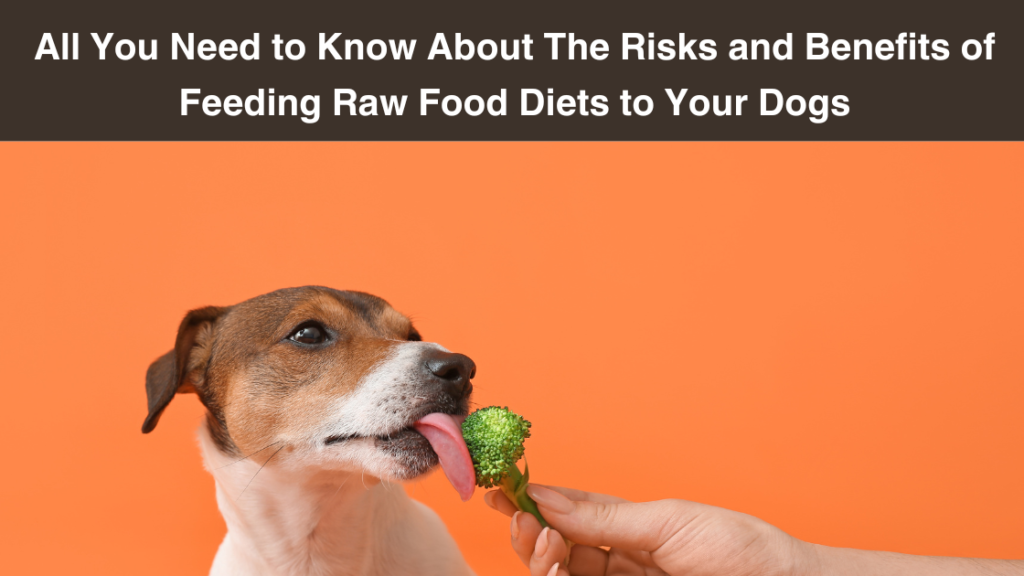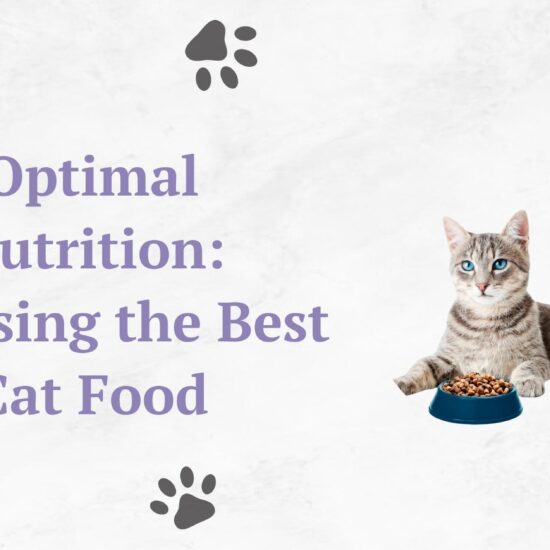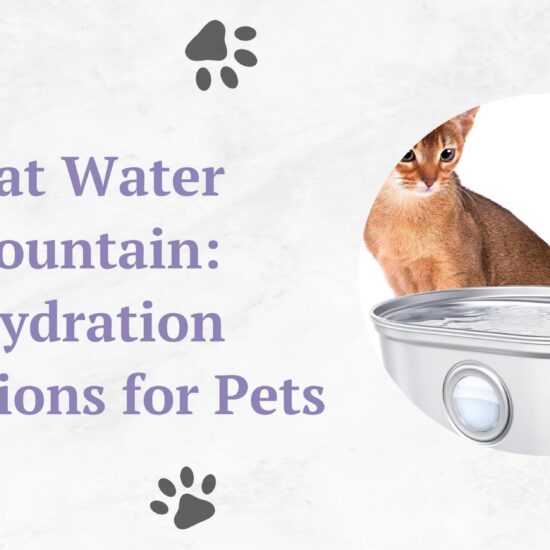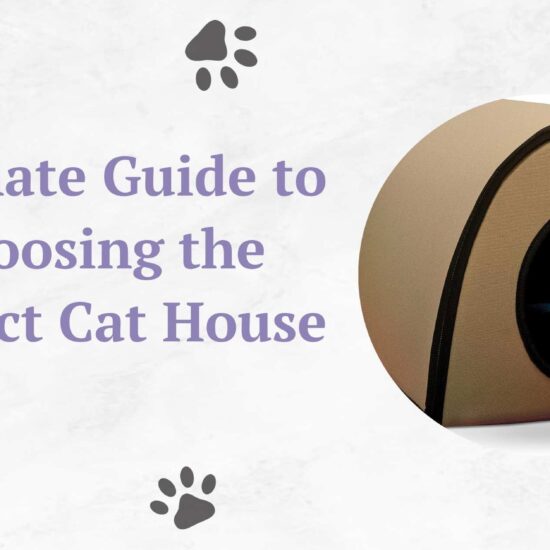As pet owners, we want the best for our furry friends, and their food is a big part of how healthy and happy they are overall. In the past few years, feeding dogs a raw food diet has become more popular among pet owners who want to give their dogs a more natural and well-balanced diet. People who like raw food diets say that it is similar to what dogs’ wild ancestors, like wolves, would have eaten. But vets and pet owners still argue about the pros and cons of feeding dogs a raw food diet.
Introduction
In this in-depth piece, we’ll talk about feeding dogs a raw food diet. We’ll look at the different parts of this way of feeding your dog, including what it involves, the possible benefits, and the risks and debates that come with it. By the end of this article, you’ll have a better idea of whether or not a raw food diet is the best choice for your dog.
What is a raw food diet for dogs?
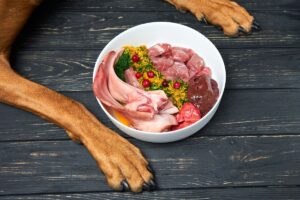
A raw food diet for dogs, also called a “raw diet” or a “BARF diet” (Biologically Appropriate Raw Food), has become popular among dog owners who want to give their dogs a diet that they think is closer to what dogs would eat in the wild. This diet focuses on eating natural, organic foods and is mostly made up of raw, uncooked foods. In this piece, we’ll talk more about the most important parts of feeding dogs a raw food diet.
Raw Meat
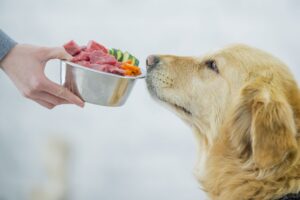
The main part of feeding dogs a raw food diet is raw meat. This part can include different kinds of meat, such as beef, chicken, turkey, lamb, and fish. Raw diet supporters say that raw meat is full of important nutrients and enzymes that are good for a dog’s health.
Nutritional Value: The benefits of feeding a dog raw meat are many. Raw meat is a natural source of high-quality protein, which is needed for strong muscles, healthy skin, and shiny hair. It also gives dogs essential amino acids, vitamins, and minerals that are important for their health as a whole.
Enzymes: People who believe in raw diets say that raw meat has enzymes that are killed when the meat is cooked. People think that these enzymes help with digestion and make it easier for the body to absorb nutrients.
Bones

Feeding dogs a raw food diet often includes bones that are both raw and full of meat. Most of the time, these bones are given to dogs to chew on and eat. There are many benefits of feeding a dog raw bones. They are a good source of calcium and other important minerals. But it’s important to be careful and make sure that the bones you choose are safe to eat.
Here are some of the health benefits of raw bones for dogs:
Calcium: Bones are a natural and easy way for dogs to get the calcium they need to keep their bones and teeth strong.
Chewing Benefis: Chewing can be good for your teeth, and so can chewing on raw bones. It helps clean a dog’s teeth and gums in a natural way, which could stop tartar and plaque from building up and improve its oral health.
Choking Hazard: Even though bones are good for your dog, some of them, especially small, fragile ones, can break apart and cause choking or intestinal problems. When adding bones to a raw diet, it is important to choose them carefully and keep an eye on them.
Organ Meat

Organ meats like the liver, heart, and kidney are important parts of feeding dogs a raw food diet. In the wild, canids would usually eat the innards of their prey first because they are full of vitamins and minerals that they need to stay alive.
Here are some of the health benefits of raw organ meat for dogs:
Nutrient Density: Organ meats are very high in nutrients. They have a lot of important vitamins and minerals, like vitamin A, vitamin B, and iron and copper.
Variety: Feeding a dog a variety of organ meats helps make sure they get a wide range of nutrients, which is good for their general health and vitality.
Fresh Fruits and Vegetables
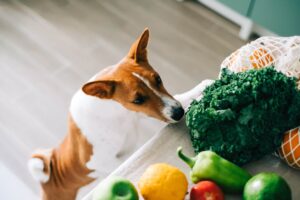
Even though most of the ingredients in raw food diet for dogs come from animals, some people choose to give their dogs fruits and veggies as well. These plant-based foods can add vitamins, minerals, and fiber to your diet, making it more well-rounded. Here are some of the health benefits of raw fruits and vegetables for dogs:
Fiber: Fruits and vegetables are good sources of fiber, which helps dogs digest food and have regular bowel movements.
Antioxidants: Plant-based foods are full of antioxidants, which help fight free radicals and lower the risk of oxidative stress and other health problems that can come from it.
Variety: Adding different fruits and veggies to a dog’s diet can give it more flavor and variety, making mealtime more fun.
Supplements
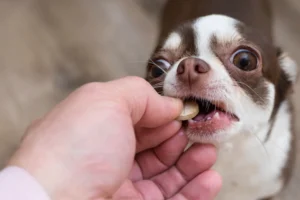
Many pet owners add supplements to their pets’ meals to make sure their raw-fed dogs get all the nutrients they need. Most people choose these products to fill in nutritional gaps and improve their dog’s health.
Fish Oil: Fish oil is often added to raw diets because it contains omega-3 fatty acids, which are good for the health of the skin, hair, and joints.
Vitamin E: Vitamin E is often added as an antioxidant to prevent damage to cells and help the defense system work better.
Probiotics: Probiotics may be added to help keep the bacteria in the gut healthy and to help with digestion.
Supplements can be used to make sure that the dog’s diet is well-balanced and meets all of its needs, especially if it only has a few different kinds of food.
So, a raw food diet for dogs includes a range of raw, uncooked foods, with raw meat, bones, organ meats, and sometimes fruits and vegetables being the most important.
Raw diet supporters point to many benefits of feeding a dog raw food, like better coat and skin health, better digestion, and better teeth. However, it’s important for pet owners to carefully plan and watch their dog’s diet to avoid possible risks and nutritional imbalances. If you’re thinking about feeding dogs a raw food diet, it’s best to talk to a vet or canine nutritionist first. This will make sure that your furry friend gets a balanced, nutritionally full diet that helps their health and well-being as a whole.
5 Benefits of Feeding a Dog Raw Food
Feeding dogs a raw food diet is becoming more and more controversial, with supporters pointing out several possible benefits of this way of eating. Even though there isn’t a lot of scientific study on this topic and it’s still being done, anecdotal evidence suggests that feeding dogs a raw food diet may have a number of benefits. In this part, we’ll talk more about these benefits.
- Better Skin And Hair
One of the most often mentioned health benefits of raw diet for dogs is that their body and skin health get much better. Proponents of raw diets say that the high-quality protein and healthy fats in raw meat are good for a dog’s skin and hair in many ways.

- Nutrient Rich Protein: Raw meat, which is a key part of feeding dogs a raw food diet, is full of high-quality protein. This protein gives the body’s skin and fur the amino acids they need to grow and heal. Lysine, methionine, and cysteine are three amino acids that are especially important for a good coat.
- Healthy Fats: Raw meat has healthy fats like omega-3 and omega-6 fatty acids. These fats are very important for skin health because they are natural cleansers and help keep the skin’s structure intact. In addition, they help make the coat shiny and smooth.
- Reducing Allergens: Some dogs are allergic to things like grains and artificial chemicals that are often found in commercial dog food. By taking these possible allergens out of their diet, dogs that eat raw food may feel better if they have skin problems like allergies or hot spots.
- Less Shedding: Having healthier hair often means less shedding. Many people who feed their dogs raw food say that their dogs shed less, which makes their homes cleaner and means they don’t need to be groomed as often.
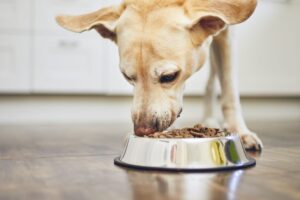
- Better Digestive Health
Dogs who eat raw food have better intestinal health, which is another important benefit. Most of the time, these meals are easier for dogs to digest than commercial kibble, which can have fillers and additives that can cause digestive problems.
Fillers aren’t used much in raw meals. Common fillers like corn, wheat, and soy aren’t used. Some dogs are known to have trouble with allergies and digestion when they eat these fillers. By taking them out of their food, dogs may have fewer stomach problems like gas, bloating, and diarrhea.
- Natural Enzymes: People who like raw food say that raw meat has natural enzymes that help the body digest food. It is thought that these enzymes help dogs get the most out of their food by making it easier for them to absorb nutrients.
- Healthy Gut Bacteria: Dogs can have healthy gut bacteria if they eat a well-balanced raw diet. A wide variety of proteins, fruits, and veggies gives a wide range of nutrients that help good gut bacteria grow, which could improve your digestive health as a whole.

- Dental Health
Feeding dogs a raw food diet can help keep their teeth healthy. It is thought that giving a dog raw bones to chew on is a natural and effective way to keep its teeth clean and could reduce the chance of dental diseases.
- Natural Teeth Cleaning: When a dog chews on raw bones, it cleans its teeth and gums in a natural way. Plaque and tartar buildup can lead to tooth problems like gingivitis and periodontal disease. Chewing on bones can help remove plaque and tartar by making them rough.
- Stronger Jaw Muscles: The work a dog has to do to chew on raw bones can also improve its jaw muscles, which is good for its teeth and mouth in general.
- Reduction in Bad Breath: Bad breath is less likely to happen when a dog’s teeth are healthy, which can be a big benefit for both the dog and its owner.
- Increased Energy and Vitality

Some owners observed more energy and liveliness when feeding dogs a raw food diet. Even though everyone responds differently, this increased energy is often linked to the fact that raw foods have more nutrients.
Nutrient Density: Raw meals are usually higher in nutrients than commercial dog foods, which often have a lot of fillers. This means that dogs can get more of the nutrients they need from their food, which could give them more energy and make them feel better overall.
Muscle Health: Muscle health is better because raw meat has a lot of high-quality protein, which helps muscles grow and stay healthy. Most of the time, dogs with strong muscles have more energy and vigor.
Better Immune Function: The vitamins, minerals, and antioxidants in raw foods can help the immune system work better. Dogs with strong immune systems are less likely to get sick and are more likely to stay busy.
- Possible Relief from Allergies

Dogs with food allergies might feel better if they switched to a raw food diet. When allergens like grains and fake ingredients, which are often found in commercial dog food, are taken out, allergic dogs can feel much better.
Identifying Allergens: Raw diets make it easier to find out what allergens a dog is allergic to. By giving their dog a simpler diet with fewer ingredients, pet owners can figure out which things make their dog allergic.
Fewer Allergic Reactions: Dogs with food allergies may have fewer allergic reactions like itching, hives, and stomach pain if their food doesn’t contain allergens like grains and fake additives.
Improved Skin and Coat: As we’ve already said, raw diets can help a dog’s skin and coat be healthier, which can be especially helpful for dogs with skin issues.
So, people who are feeding dogs a raw food diet point out a number of possible benefits, such as better coat and skin health, better digestion, healthier teeth, more energy and vigor, and possibly fewer food allergies. Even though there are many oral reports of these benefits, it is important to remember that how each dog reacts to a raw diet may be different. If you are thinking about feeding dogs a raw food diet, you should talk to a vet or canine nutritionist to make sure that the diet is right for your pet’s needs and to talk about any worries or risks.
Note: There might be affiliate links mentioned here. We may receive a commission if you purchase a product through an affiliate link. There is no additional charge for you. Please do your own research before making any online purchases.
6 Risks and Controversies of Feeding Dogs a Raw Food Diet
Feeding dogs a raw food diet is becoming more popular among pet owners who want to give their dogs a more natural and healthy diet, but it is important to be aware of the risks and debates that come with this feeding method. In this part, we’ll talk more about these worries and problems to give you a fair view of raw food diets for dogs.
- Risk of Nutritional Imbalance

One of the biggest worries about feeding dogs a raw food diet is that they might not get enough of certain nutrients. It can be hard to make sure that a dog’s diet is balanced and meets all of its needs. Without proper planning and supplements, a dog may not get all the important nutrients it needs.
Essential Nutrients: Vitamins, minerals, amino acids, and fatty acids are some of the necessary nutrients that dogs need to stay healthy. It can be hard to get the right mix of these nutrients when feeding dogs a raw food diet, especially if you don’t have enough knowledge.
Risk of Deficiencies: If you fail to provide the essential nutrients, you could have shortages that show up in different ways, like slow growth, a weaker immune system, or bone problems. For example, skeletal problems can be caused by not getting enough calcium in your food.
Consulting a Professional: When planning on feeding dogs a raw food diet, you should talk to a vet or a canine nutritionist to make sure there are no nutritional issues. They can help you make a meal plan for your dog that is well-balanced and meets all of its needs.
- Risk of Bacterial Contamination
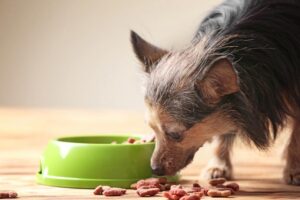
Feeding a dog raw meat, especially chicken and ground meat, can be contaminated with germs, which can be bad for both dogs and their owners’ health. Salmonella and E. coli are two harmful bugs. E. coli can be found in raw meat, and while dogs can usually handle these germs better than people, they can still get sick and could even spread the bacteria to people.
Cross-Contamination: Handling raw meat in the kitchen can lead to cross-contamination, which can make people sick if they don’t follow good cleaning practices.
Immune-Suppressed Individuals: People who are immune-suppressed, such as the elderly, very young children, or people with weak immune systems, may be more likely to get sick from exposure to raw meat.
Food Safety Measures: It is important to follow strict food safety measures when handling and cooking raw meat to reduce the chance of bacterial contamination. This means washing your hands well, keeping surfaces clean, and keeping raw meat away from other things.
- Risk of Choking

Bones are a popular part of feeding dogs a raw food diet, but small, fragile bones can be dangerous for dogs to eat. When these bones are chewed, they might break into pieces that could cause major injuries or blockages in the digestive system.
Splintering Bones: When chewed, some bones, especially those from birds or small animals, can break into sharp pieces. These pieces could get stuck in the esophagus, stomach, or intestines, which could be life-threatening.
Blockages: Bone fragments that are swallowed can build up in the digestive system and cause blockages that need surgery to fix.
Safe Bones: If you decide to give your dog bones as part of its food, it is important to choose bones that won’t splinter and watch your dog while it chews on them. Ask your vet for advice on what kinds of bones are safe for your dog.
- Risk of Parasites

Raw meat could have bugs like Toxoplasma and Trichinella, which can be harmful to dogs’ health and could be passed on to people. Even though freezing meat before giving it away can lower the chance of parasites, it doesn’t get rid of them completely.
Freezing Meat: Some bugs can be killed by freezing meat at very low temperatures for a long time. But this method might not work every time and might not get rid of all possible germs.
Risk of Transmission: Dogs can get parasites from eating tainted meat, and sometimes they pass the parasites in their poop, which could make people sick if they touch the poop without washing their hands first.
Consult a Veterinarian: To keep your dog from getting parasites, talk to a vet about where to get, how to handle, and how to cook raw meat for your dog.
- Difficulty in Meeting Nutritional Needs

It can be hard for pet owners to make sure that a dog’s raw food is well-balanced and meets all of its nutritional needs. Many people may forget to provide important nutrients when feeding dogs a raw food diet, which could hurt their health in the long run.
Comprehensive Understanding: To make a raw diet that has all the important nutrients, you need to know a lot about canine nutrition, which can be complicated and can change based on age, breed, and activity level, among other things.
Supplements: In many cases, supplements are needed to make sure that the food has all the nutrients it needs. But it can be hard to figure out which vitamins are right and how much of them to take.
Regular Checkups: People who feed their dogs raw food must keep a close eye on their dog’s health and act quickly on any signs of nutritional shortages or imbalances.
- High Cost and Time Consuming
Feeding dogs a raw food diet can be expensive, especially if you want to get good products. Preparing a raw diet and keeping it up can also take a lot of time because it requires careful planning and regular checks.
Cost of High-Quality foods: It can be expensive to buy high-quality, human-grade foods for a raw diet, and the costs can add up over time.
Preparation Time: It takes time and work to find, measure, and prepare the items for a raw diet. Also, it can be hard to eat the same things every day and in the right amounts.
Storage and Handling: It’s important to store and handle raw products the right way to keep them from getting spoiled or contaminated by bacteria. This makes it even harder to stick to a raw food diet.
So, feeding dogs a raw food diet comes with its own risks and debates, such as the possibility of a nutritional imbalance, bacterial contamination, choking dangers, parasitic infections, trouble meeting the dog’s dietary needs, and the high cost and time it takes to prepare the food. Some pet owners may choose to feed their dogs a raw diet because they think it will be good for them. However, it is important to make an informed choice and talk to a vet or canine nutritionist to make sure that your dog’s dietary needs are met while minimizing risks.
To keep your dog and your family from getting sick from food, it’s also important to follow strict food safety rules when handling and cooking raw meat.
5 Steps for Feeding Dogs a Raw Food Diet
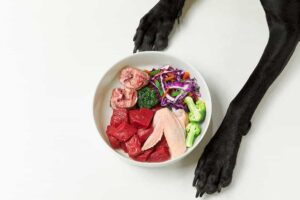
Feeding dogs a raw food diet can be a rewarding experience, but it takes careful planning, thought, and a commitment to your dog’s health and well-being. In this part, we’ll talk about the most important steps and things to think about when switching your dog to a raw food diet.
Step 1: Research and Consultation
Before starting the process of switching your dog to a raw food diet, it is important to get important information and advice from people who are experts in canine nutrition. Here are some important things to think about:
Breed and Age: Know that different dog breeds and ages need different amounts of food. Find out what your dog needs to eat based on its type and life stage, such as whether it is a growing puppy, an adult, or an older dog.
Consult with Experts: Talk to your vet or a qualified canine nutritionist to make a balanced meal plan that fits your dog’s specific needs. These experts can give you very helpful information and advice based on your dog’s health, how active he or she is, and any underlying medical problems.
Finding High-Quality Products: Find reputable places to get high-quality products that are safe for humans. Your dog should eat a range of protein sources, such as meat, organs, and bones, as well as vegetables and, if necessary, supplements.
Understanding the Basics: Learn the basics of raw feeding, such as the right ratio of protein to fat, how organ meat fits into the diet, and why bones are important. If you know these basics, you’ll be able to make a well-balanced raw diet.
Step 2: Gradual Transition
Changing your dog’s diet from commercial dog food to raw food all at once can be hard on its digestive system. To make this change easier and reduce the chance of stomach problems, it is important to take a slow approach:
Start Slowly: Add a small amount of raw food to your dog’s regular diet to get things going. This helps your dog get used to the new tastes and textures without putting too much stress on their stomach.
Incremental Increases: Over the course of a week or more, gradually increase the amount of raw food in your dog’s meals while decreasing the amount of commercial kibble or canned food. During this time, keep a close eye on your dog for any side effects.
Pay Close Attention to Your Dog’s Poop: Pay close attention to what your dog poops. A healthy change should lead to stools that are harder and smaller. If you have loose stools, it could mean that the change is happening too quickly and you should slow it down.
Step 3: Monitoring Health
During the transition period and while your dog is on a raw food diet, it is important to keep a close eye on their health. Keep an eye out for signs of stomach problems or a lack of nutrients, such as:
Changes in Weight: Keep an eye on your dog’s weight to make sure it stays at a healthy level. If they lose or gain weight, it could mean that their food isn’t balanced.
Lethargy: If your dog seems especially sleepy or tired, it could be a sign that he or she isn’t getting enough nutrients. Make sure they are getting the right amounts of the nutrients they need.
Coat and Skin: Pay attention to the state of your dog’s coat and skin. A healthy diet should lead to a better coat that shines and has fewer skin problems.
Changes in Behavior: Keep an eye out for any changes in behavior that could mean pain or sickness. If your dog is acting strangely, you should talk to your vet right away.
Regular Vet Checkups: Keep making appointments with your vet for regular checkups so they can check on your dog’s overall health and answer any questions or worries you may have about their food.
Step 4: Rotating Protein Sources
When it comes to a raw food diet for dogs, variety is key. Rotating protein sources and eating a variety of meats, organs, and vegetables can help avoid nutrient deficiencies and give them a more well-rounded diet:
Protein Diversity: Mix up the protein sources your dog eats, like beef, chicken, turkey, lamb, and fish, to make sure he gets a wide range of nutrients. Each source of protein has its own perks.
Organ Foods: Your dog should eat organ foods like liver, heart, and kidney. These parts are full of vitamins and minerals that your body needs.
Vegetables and Supplements: While animal-based ingredients are the main focus, adding a range of vegetables and supplements like fish oil for omega-3 fatty acids and vitamin E for antioxidants can make your dog’s diet even healthier.
Step 5: Ensuring Safety and Hygiene
When handling raw meat and making food for your dog, it’s important to follow food safety and cleanliness rules to reduce the risk of bacterial contamination:
Handwashing: When you’re done with raw meat, wash your hands well with soap and warm water. This helps stop the spread of germs that are bad for you.
Sanitizing Surfaces: Clean and disinfect any surfaces, tools, or bowls that touch raw meat. To keep from spreading germs, only use certain tools to make your dog’s food.
Proper Storage: Put raw items in airtight containers and put them in the fridge or freezer to keep them from going bad or growing bacteria. Follow the rules for safekeeping to keep ingredients fresh.
Avoiding Cross-Contamination: To avoid cross-contamination, keep raw items separate from food for people. This means that you should use different cutting boards and tools to make your dog’s food.
So, switching your dog to a raw food diet can be a positive experience if you do your research, plan carefully, and care about your dog’s health. To make a balanced meal plan that fits your dog’s specific needs, you need to talk to experts, like vets or canine nutritionists. For a smooth and successful change to a raw food diet, you must make the change slowly, keep a close eye on your dog’s health, and handle raw items in a safe way. Remember that every dog is different, so be ready to make changes as needed to make sure your dog’s diet is best for his or her general health.
FAQs
What does feeding dogs a raw food diet mean and why is it becoming more popular?
Dogs on a raw food diet, also called a “raw diet” or “BARF diet,” eat raw, uncooked foods like meat, bones, organs, and sometimes fruits and veggies. It has become more common because some pet owners think it is similar to the natural diet of dogs’ ancestors and could be good for their health.
Is there any reason why I shouldn’t be feeding dogs a raw food diet?
Proponents of raw diets say that there may be benefits, such as better health for the coat and skin, better digestion, better tooth health, more energy, and relief from food allergies. But there isn’t a lot of scientific proof, and people react differently.
What are the risks of feeding dogs a raw food diet?
There are risks to feeding dogs a raw food diet, like nutritional imbalances, salmonella and E. coli contamination, choking dangers from bones, possible parasitic infections, trouble meeting dietary needs, and the high cost and time needed.
Can I give my dog raw meat without adding anything else?
Even though raw meat is a big part of a raw food diet, you should talk to a vet or nutritionist to make sure your dog is getting all the nutrients he needs. In many cases, you may need vitamins to make up for what you’re missing.
What should I think about when switching my dog to a raw food diet?
A slow change is very important. Start by adding a small amount of raw food to your dog’s regular diet. Over a week or more, add more raw food. Keep a close eye on your dog’s health, including the quality of their poop. Talk to a professional to get advice.
Can I give my dog fruits and vegetables?
Yes, fruits and veggies are sometimes added to raw food diets as extras. They can add more vitamins, minerals, and fiber, but the focus should still be on foods that come from animals.
What should I watch out for when giving my dog raw meat to eat?
Follow strict cleanliness rules by washing your hands well, wiping down surfaces, and only using certain tools on raw meat. Store raw ingredients away from food for people to keep them from getting contaminated.
When I feed my dog a raw diet, should I avoid giving him certain bones?
Yes, stay away from small, fragile bones that can break, like chicken bones. Talk to your vet about what kinds of bones are safe for your dog.
How can I make sure my dog gets a well-balanced diet of raw food?
Talk to your vet or a canine expert about making a well-balanced meal plan for your dog based on its breed, age, and health. Check on your dog’s health often and make changes as needed.
Is a raw food diet good for all dogs?
Raw food may not be good for all dogs, especially those with certain health problems or dietary needs. Talk to your vet to find out if it will work for your dog’s specific needs.
Conclusion
Raw food meals for dogs are becoming more popular among pet owners who want to give their dogs a healthier, more natural diet. Even though there are supposed benefits, like better skin and coat health, better digestion, and possibly fewer allergy symptoms, it’s important to think about the risks and controversies that come with them, like nutritional imbalances, bacterial contamination, and choking dangers.
Before switching your dog to a raw diet, you should talk to a vet or canine expert to make sure it’s right for his or her needs. If you decide to go ahead, plan your dog’s food carefully and keep an eye on it to make sure it stays healthy and happy.
In the end, the choice about whether or not to feed your dog raw food should be based on a careful look at the possible benefits and risks, as well as your dog’s specific needs and health. It’s important to put your pet’s health first and talk to experts about how to feed them in the best way for their general health.


